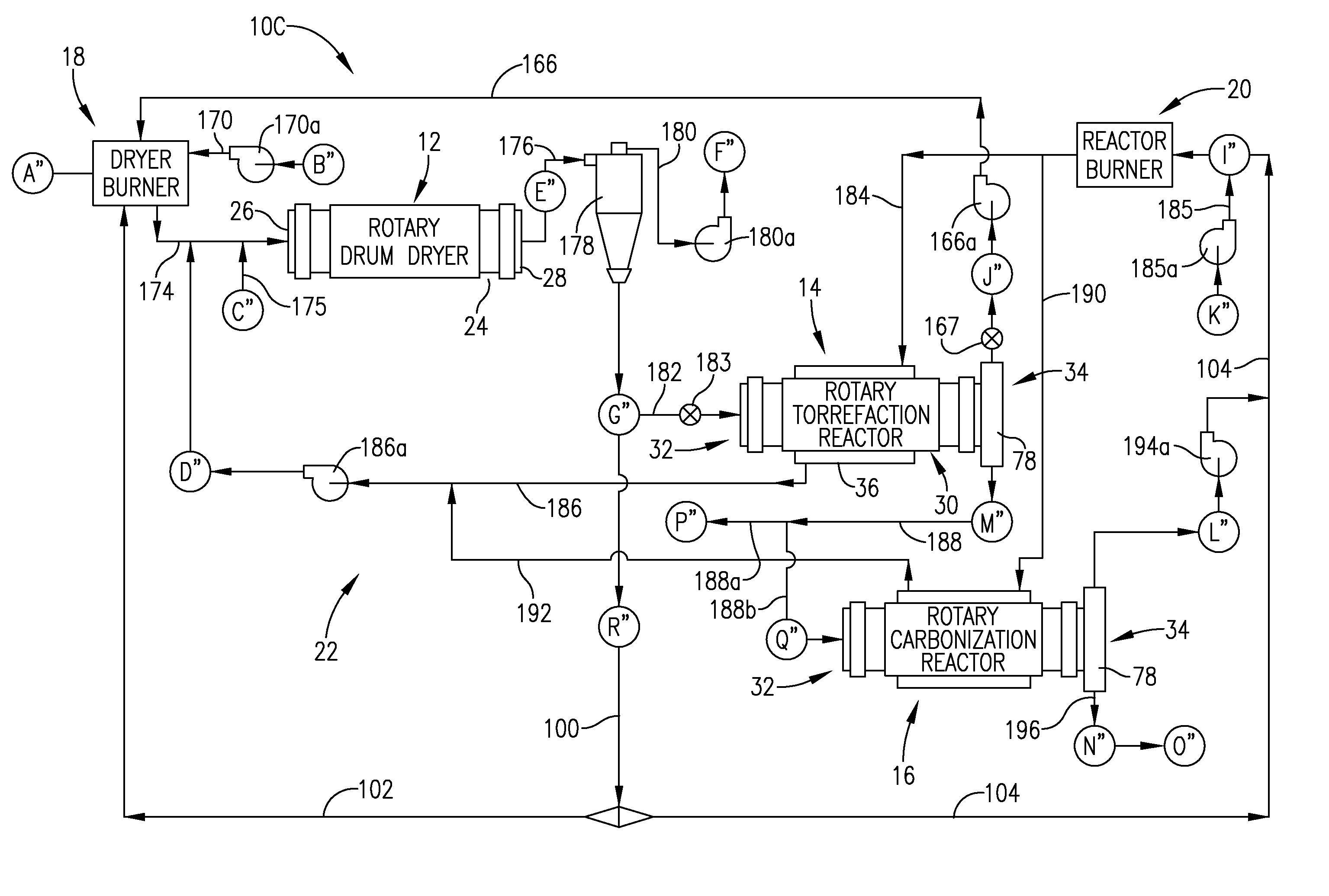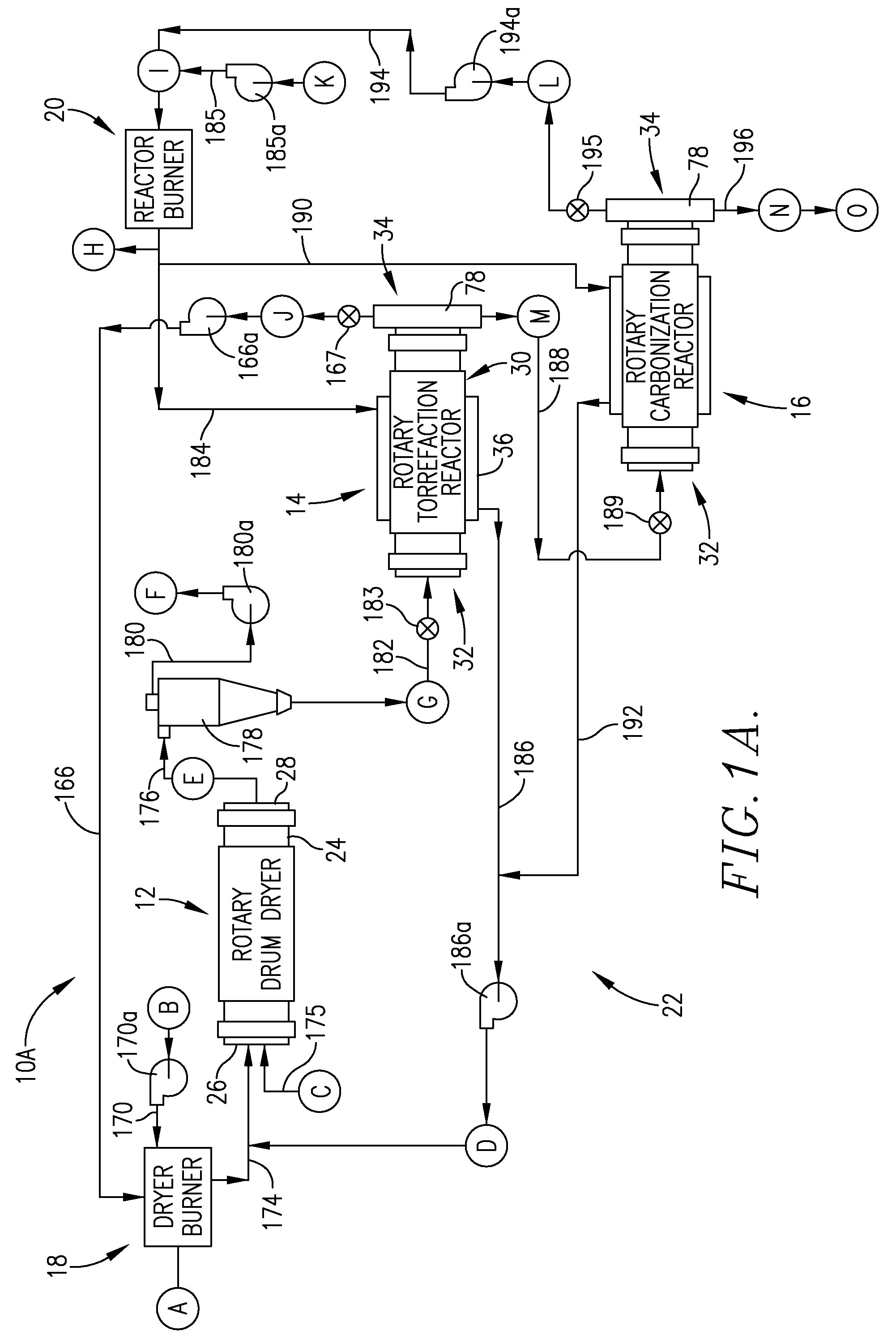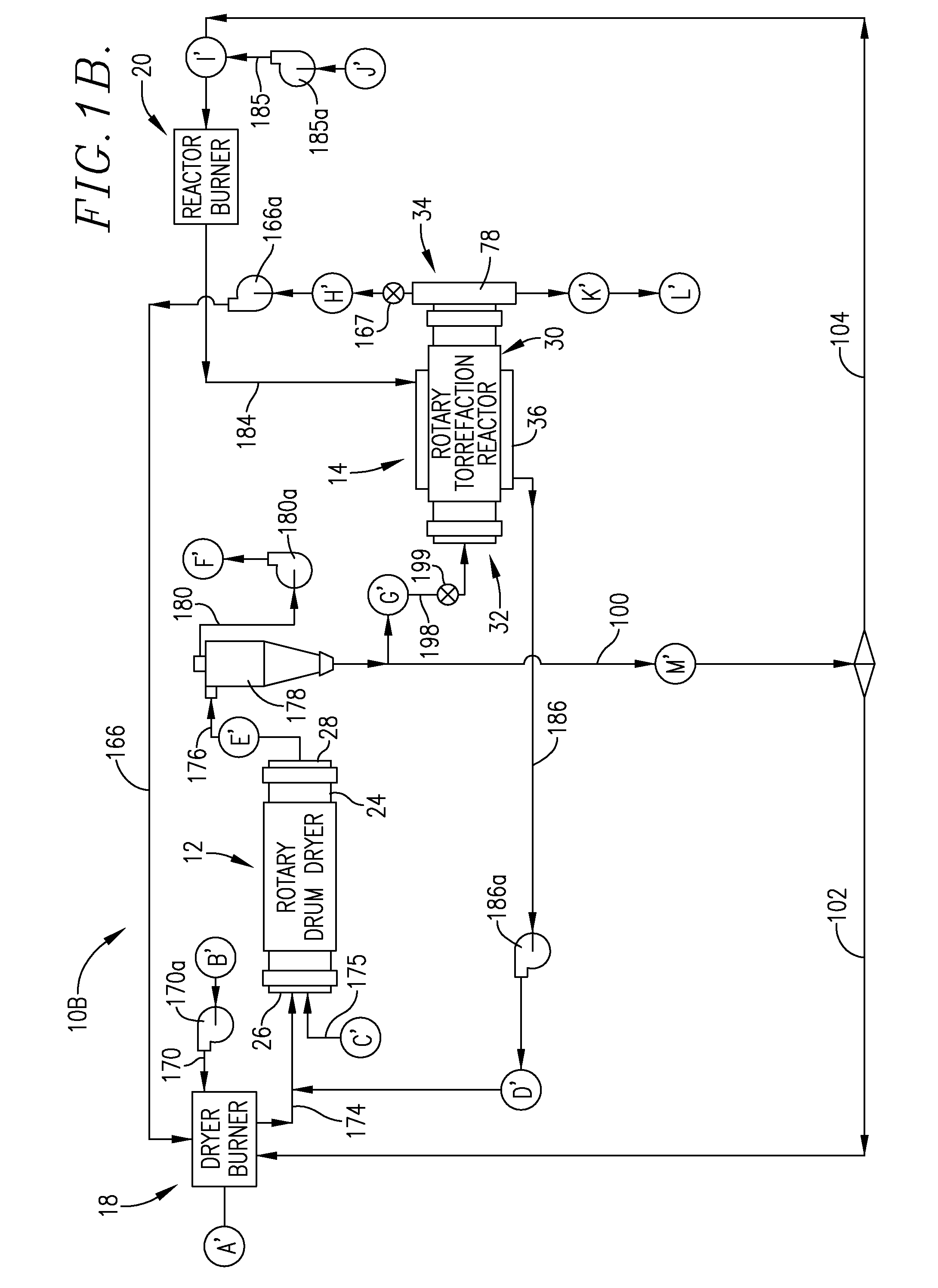High energy efficiency biomass conversion process
a biomass conversion and high energy efficiency technology, applied in the direction of combustible gas coke oven heating, separation processes, waste based fuel, etc., can solve the problems of tensile smoking and relatively low throughput of single-reactor systems
- Summary
- Abstract
- Description
- Claims
- Application Information
AI Technical Summary
Benefits of technology
Problems solved by technology
Method used
Image
Examples
example 1
[0045]This is a hypothetical, computer-based example using system 10A for the conversion of a typical wood chip biomass into charcoal product, and production of all of the thermal energy used in the operation of the system, once the process has achieved steady state operation.
[0046]Referring to FIG. 1A, locations A-O are indicated throughout the system 10A. The following legend sets forth the mass-energy balance for the process at these respective locations.[0047]A—dryer burner operation[0048]500 BTU / lb[0049]435 lb / hr VOCs[0050]0.22 MMBtu / hr[0051]B—combustion air to dryer burner[0052]2,327 SCFM[0053]32° F.[0054]40% excess air[0055]C—biomass infeed to dryer[0056]4,300 lb / hr total[0057]2,365 lb / hr solids[0058]1,935 lb / hr water[0059]D—hot gases to dryer[0060]11,164 ACFM[0061]21,647 lb / hr[0062]2.21 MMBtu / hr[0063]770° F.[0064]E—dryer output[0065]2,438 lb / hr total[0066]2,365 lb / hr solids[0067]73 lb / hr water[0068]110° F.[0069]F—vented exhaust gases[0070]8,000 ACFM[0071]230° F.[0072]G—torre...
example 2
[0112]This is a hypothetical, computer-based example using system 10B for the conversion of a typical wood chip biomass into torrefied product, and production of thermal energy used in the operation of the system, once the process has achieved steady state operation.
[0113]Referring to FIG. 1B, locations A′-M′ are indicated throughout the system 10. The following legend sets forth the mass-energy balance for the process at these respective locations.[0114]A′—dryer burner operation[0115]8,000 BTU / lb dried biomass[0116]362 lb / hr dried biomass[0117]2.90 MMBtu / hr[0118]B′—combustion air to dryer burner[0119]1,223 SCFM[0120]32° F.[0121]175% excess air[0122]C′—biomass infeed to dryer[0123]4,300 lb / hr total[0124]2,365 lb / hr solids[0125]1,935 lb / hr water[0126]D′—hot gases to dryer[0127]2,122 ACFM[0128]5,885 lb / hr[0129]0.50 MMBtu / hr[0130]400° F.[0131]E′—dryer output[0132]2,438 lb / hr total[0133]2,365 lb / hr solids[0134]73 lb / hr water[0135]110° F.[0136]F′—vented exhaust gases[0137]8,000 ACFM[0138...
example 3
[0169]This is a hypothetical, computer-based example using system 10C for the simultaneous conversion of a typical wood chip biomass into torrefied and charcoal products, and production of a substantial part of the thermal energy used in the operation of the system, once the process has achieved steady state operation.
[0170]Referring to FIG. 1C, locations A″-Q″ are indicated throughout the system 10C. The following legend sets forth the mass-energy balance for the process at these respective locations.[0171]A″—dryer burner—wood / VOC burner[0172]8,000 BTU / lb wood[0173]232 lb / hr wood[0174]1.86 MMBTU / hr[0175]B″—combustion air[0176]713 SCFM[0177]32° F.[0178]150% excess air[0179]C″—biomass infeed to dryer[0180]4,300 lb / hr total[0181]2,365 lb / hr solids[0182]1,935 lb / hr water[0183]D″—hot gases to dryer[0184]4,371 ACFM[0185]8,476 lb / hr[0186]1.36 MMBTU / hr[0187]770° F.[0188]E″—dryer output[0189]2,438 lb / hr total[0190]2,365 lb / hr solids[0191]73 lb / hr water[0192]3% moisture[0193]110° F.[0194]F″—...
PUM
 Login to View More
Login to View More Abstract
Description
Claims
Application Information
 Login to View More
Login to View More - R&D
- Intellectual Property
- Life Sciences
- Materials
- Tech Scout
- Unparalleled Data Quality
- Higher Quality Content
- 60% Fewer Hallucinations
Browse by: Latest US Patents, China's latest patents, Technical Efficacy Thesaurus, Application Domain, Technology Topic, Popular Technical Reports.
© 2025 PatSnap. All rights reserved.Legal|Privacy policy|Modern Slavery Act Transparency Statement|Sitemap|About US| Contact US: help@patsnap.com



